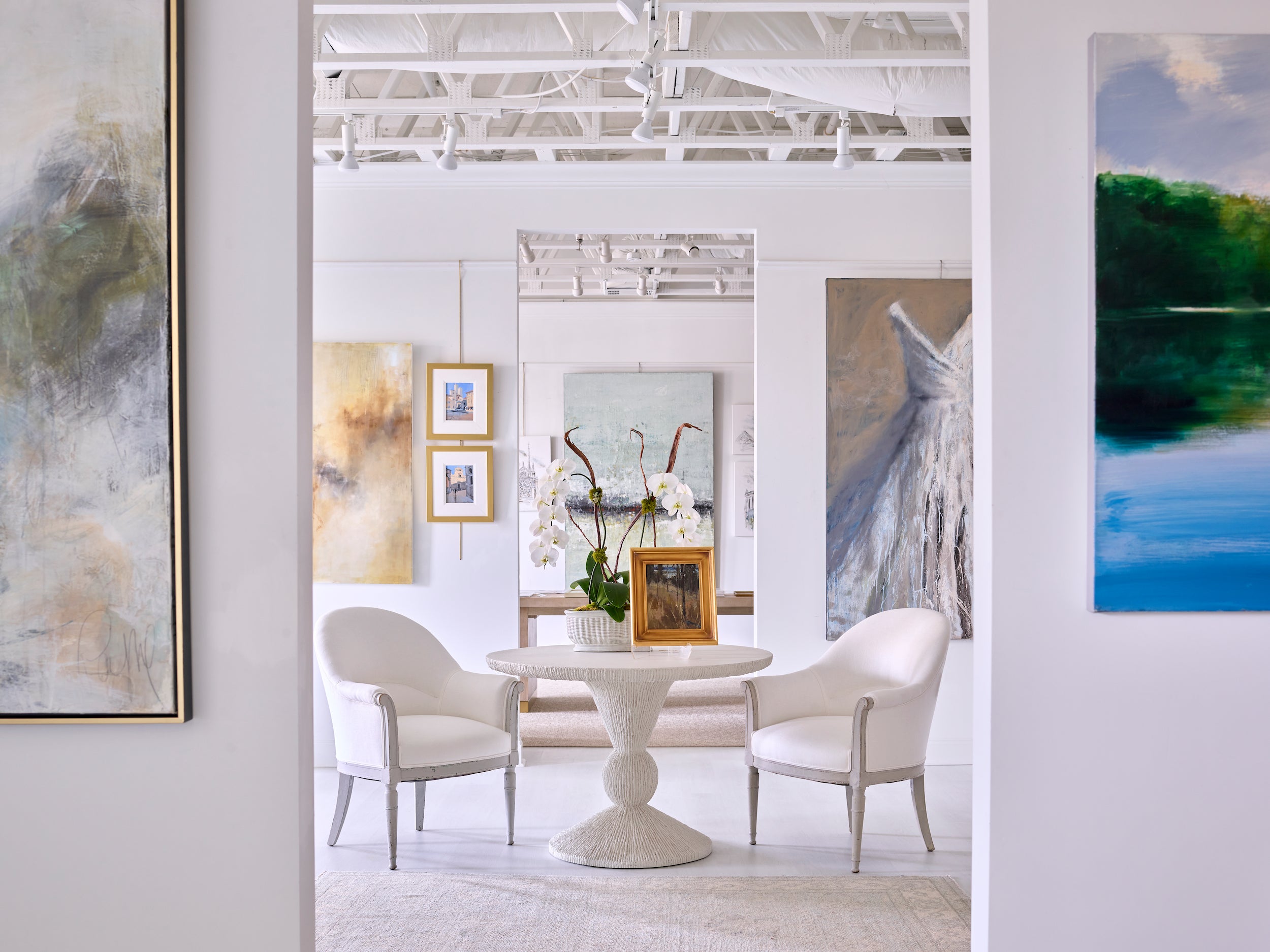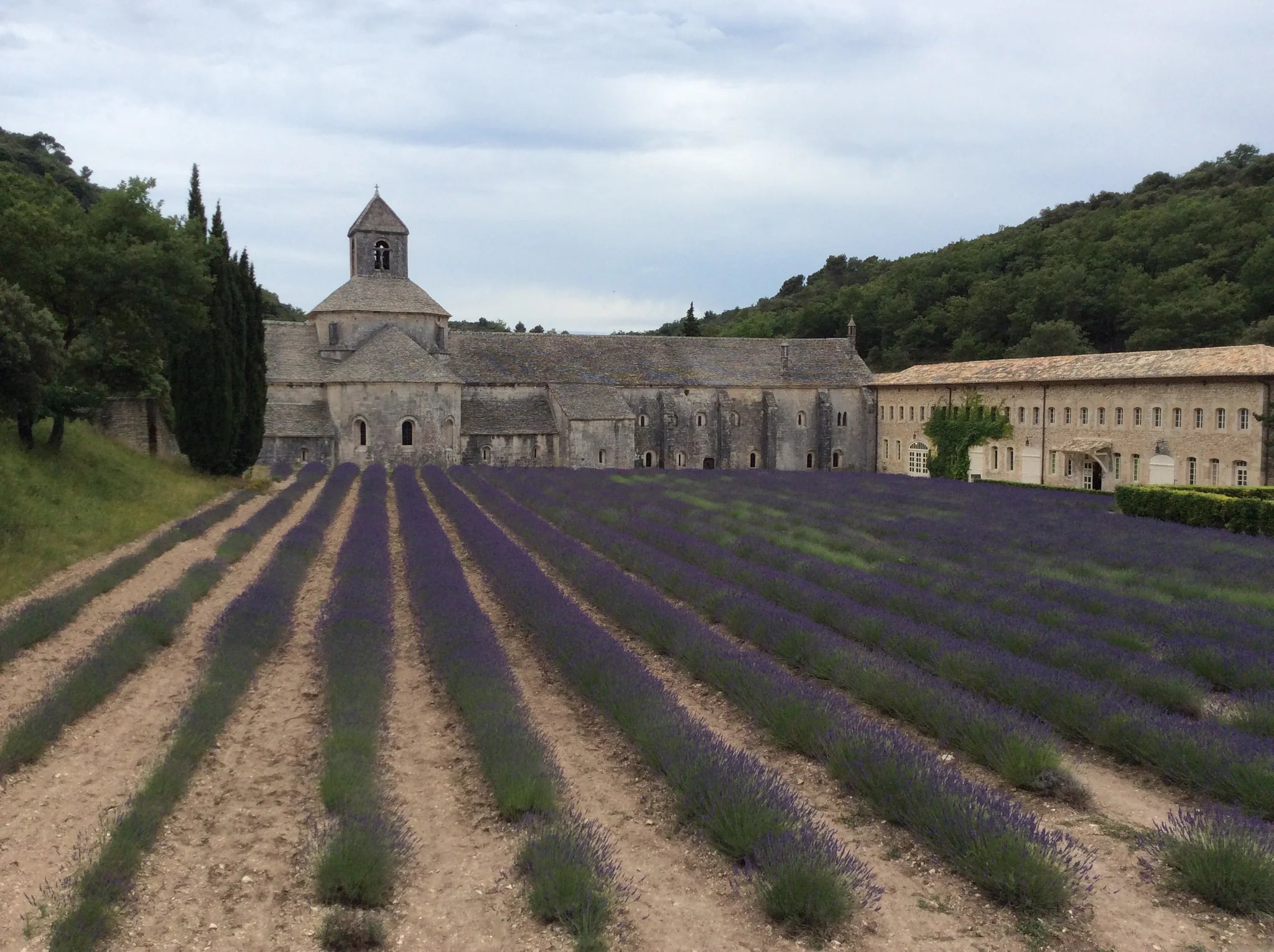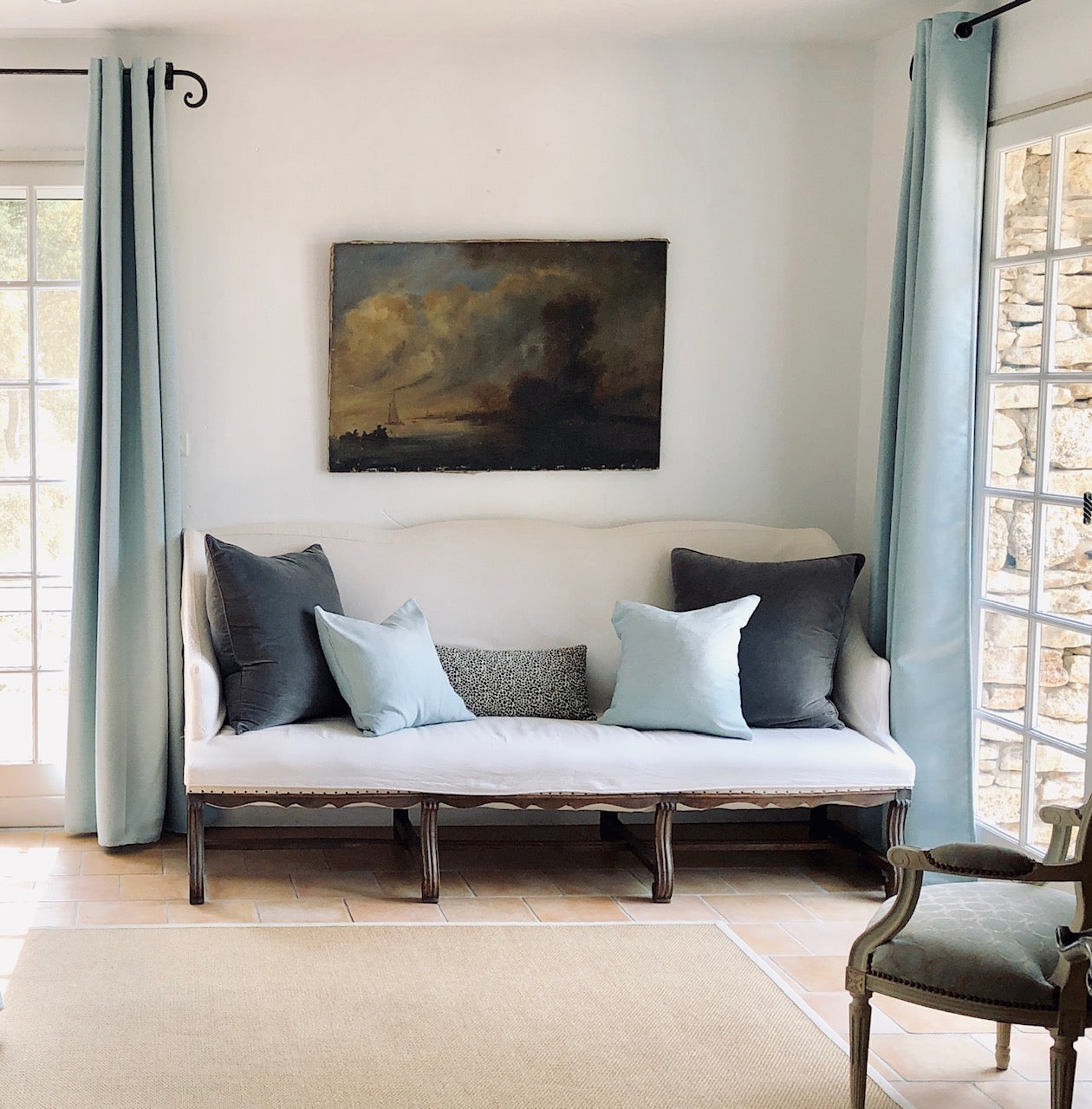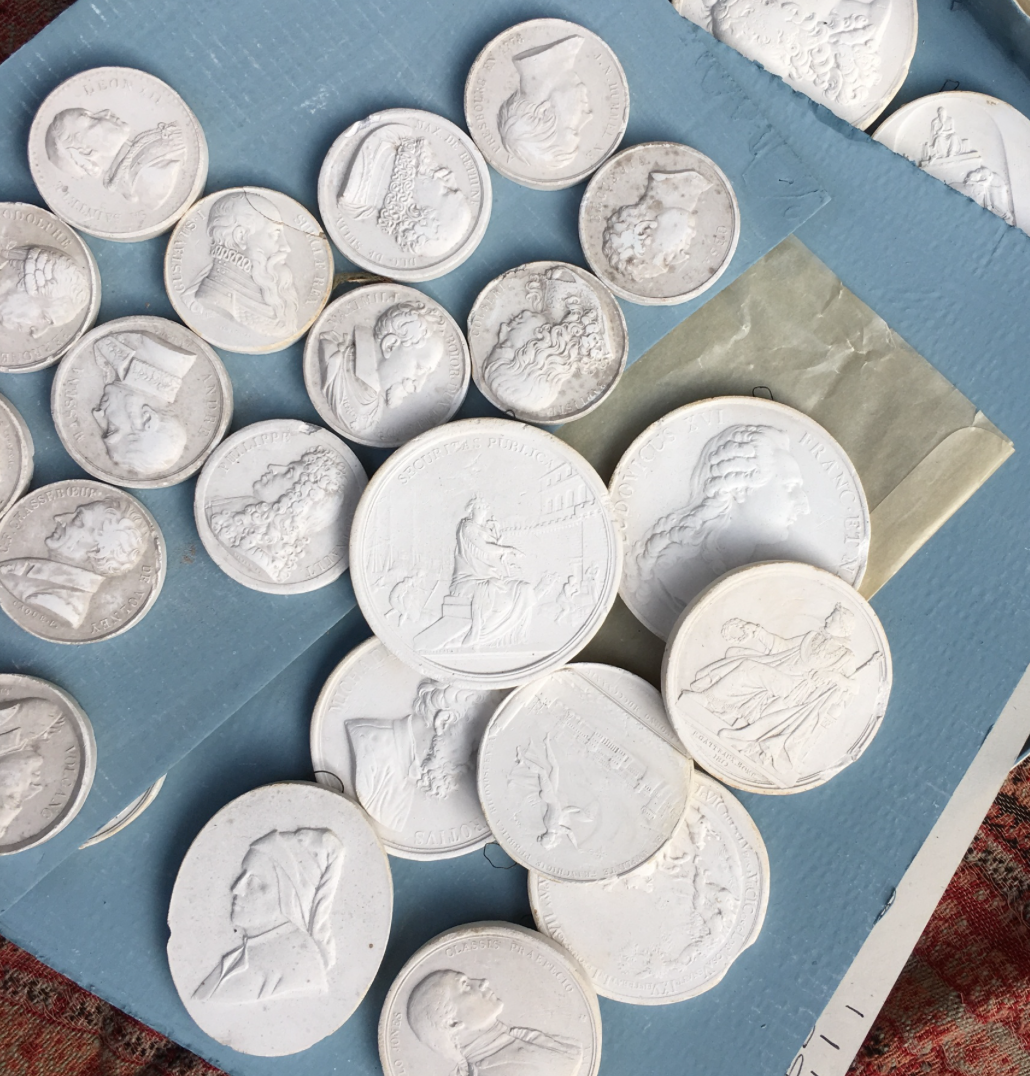
A few months ago, Trudy and I were doing a “dry run” for our upcoming Easter buying trip to France in a lovely little mountainous village north of Avignon, known for its antiques and art. Wandering the cobblestoned streets and focused on art, antiques and lunch, I spotted a large and distinctive pale blue seascape painting perched precariously on a stone wall. When I asked the vendor if I could look at it closely, he mumbled something about it being a “Ruysdael” and proceeded to knock it into a pitchfork that was hanging close by. I held my breath and grabbed it from him, relieving the unframed canvas of further damage. He gave me a fair price that reflected his unintended clumsiness, and I took it. Regardless if it was a “Ruysdael,” I loved the painting and at the very least, I figured I’d be doing the art world a favor by rescuing this painting from his clumsy arms.

Once I got it safely home, I became more and more enamored and excited about the painting, despite its poor condition. I loved the composition, the stormy sky, the figures on the boat, the contrasting lights and darks and the overall moodiness of the painting. I knew of Salomon Ruysdael, the prolific Dutch sea and landscape painter, and his equally prolific nephew, Jacob Ruysdael. As a fan of 17th C. Dutch landscapes who is always drawn to that wing of the Met, the Louvre and the National Gallery, I have had the Ruisdael’s on my radar for a long time. But was this really a Ruysdael? There were a few things I needed to figure out.

As Salomon Ruysdael typically didn’t always sign his paintings, I wasn’t surprised that a signature was missing. On the other hand, someone had meticulously labeled the back of the painting in Ruysdael’s signature. It looked more recent than the painting, so I doubted it was original, although it so resembled Ruysdael’s signature that it gave me both hope and pause. Wy would someone do that? Had there been an original signature or marking that was faded with time and therefore they needed to label it on the back? Why copy his signature? Was it a fake?
More disturbing was a stamp on the back that said, “Leased Property U.S. …” and then something illegible. My mind immediately started spinning as to what that could mean. Was it stolen from an American Embassy somewhere? Or was this painting, like thousands of others, stolen during the Nazi occupation of Europe? Part of me hated that thought, because my duty would be to return it to its rightful owners, and I love this painting. But part of me also relished the idea that through lengthy and careful sleuthing, I might uncover its origins and reunite it heroically to its rightful owners – and what a story that would make!

With these dilemmas at play, I needed to contact an expert in 17th C. Dutch paintings. I had a fortunate chance meeting with my friend Rebecca Cochran, who is a licensed art appraiser, and although her specialty is contemporary art, she gave me some valuable information, which included a visit to the Frick Museum Library, in N.Y. With the help of some very patient and attentive librarians, I requested several stacks of books on Ruysdael from the Museum archives, and spent the next splendid afternoon poring over images in the hushed and hallowed halls of the Frick.

First, I combed the pages and pages of auction results for Salomon Ruysdael. My heart skipped a few beats when I saw sales prices in the 7 figures, but then slowed down to normal when the prices were in the teens. With no record of this painting being sold at auction, it was time to move on.




The next step was to pour over archives of Ruysdael’s work which took me to books written in German prior to WW II. With google translate on my phone, I managed to decipher interesting tidbits about the artist, but nothing very conclusive. It was easy to rule out most of the images although a curious pattern developed. I kept seeing the same scene over and over again, of a large tree in the right foreground, and the sea on the left with some buildings in the distance and a fishing boat in the middle ground. I kept referring back to my painting and decided that they had definitely been painted in the same spot. So we were getting warmer ...

The clouds, the composition and the color was so close to my painting that I felt like we were getting very close.

Thumbing through an archive of the artist’s work written by the scholar Wolfgang Stechow in 1930 (in German), I turned the page and spotted the almost identical painting to mine! It had all the exact elements of my painting but was just slightly different. Even the librarian shared in my eureka moment and admitted that she hadn’t expected my hunt to uncover the treasure. Mine is painted on canvas and this one is on wood. So what does it mean?

Can you spot the similarities! Look at the fishing net!

Even considering my painting's poor condition, it's clear that it's not as defined as Ruysdael’s other work. Could mine have been an oil study for the final painting, which would explain the looseness of the brushstrokes? But why would he have painted such a large study? Typically artists paint small studies before they translate to the larger canvas. Or was this simply unfinished, with the refinements to be added later? And are we sure that at one time, it wasn’t more defined? After all, the painting is over 350 years old! Surely, it’s allowed to show some signs of age, especially if it’s been residing in someone’s attic or barn for over three centuries (look at the condition of the painting from Latvia before it was restored). Of course it could also be a forgery, or a copy by a lesser artist, or even a contemporary of Ruysdael's, of whom there were many. Come to find out, this very location and subject was very popular among 17th C. Dutch artists!
At last I needed to address another thorny issue: What about the markings on the back? Was my painting stolen?
Reluctantly I opened up the database of stolen paintings and discovered, to my dismay, that at least 45 paintings by Salomon Ruysdael have gone missing over the years. The directory is hearbreaking, as most of them were stolen between 1938 and 1943 in Germany. I held my breath studying each one, hoping that mine would not surface among them. I worried when I came across this one - from the Monument's Men website - but was assured, both by the subject and the size that it was not the same painting.

Of all the entries, the hardest to identify were those without pictures; but I was able to rule out most of them, as they were painted on wood or were a different size from mine. There is just one that is giving me pause as it was listed as a River Scene, with no medium and no size, confiscated from a German family in the summer of 1941. I will follow up, of course, and while I hope that it isn't mine, the idea of reuniting it with its rightful owners may even outweigh my selfish desires to keep it!
Of course, nothing has been ruled out or determined (yet). And having opened this can of worms, I have the duty to keep fishing until I get the answers. My next step wil be to contact several experts who specialize in 17th Century Dutch landscape paintings, and I'll let you know when I know more.
Whatever comes of my research and regardless of its provenance, this painting will always be special to me, as is the adventure that it has sparked. Right now I’m walking that fine line between hoping for a spectacularly unidentified Ruysdael and just enjoying the blissful coincidence of another fun day at a market in the South of France where life is good and treasures lurk behind every pitchfork!
Ta ta,
HH
P.S. Needless to say, Trudy and I loved our scouting visit to this little village and for the first time ever, we are offering it as part of our Provence shopping trip in 2020. The April trip filled up immediately, so we are considering another trip on August 15th, and will definitely be opening up the Easter trip to others in 2021. We know you'll find some treasures ... but we can’t guarantee any Ruysdael’s!












2 comments
Terri Symington
… what a great story … ! I hope you solve the mystery … perhaps it was painted by a student who admired his work … and perhaps that student later became well known …
… what a great story … ! I hope you solve the mystery … perhaps it was painted by a student who admired his work … and perhaps that student later became well known …
Bill and Steffi
I HOPE Steffi reads this!! She is in Provence right now and NEEDS TO GO ART SHOPPING! And when you, Ann and Meg decide that the right home for this lovely Ruysdael is in the home of a real Dutchie…call Steffi! Tu nous manques à tous
I HOPE Steffi reads this!! She is in Provence right now and NEEDS TO GO ART SHOPPING! And when you, Ann and Meg decide that the right home for this lovely Ruysdael is in the home of a real Dutchie…call Steffi! Tu nous manques à tous